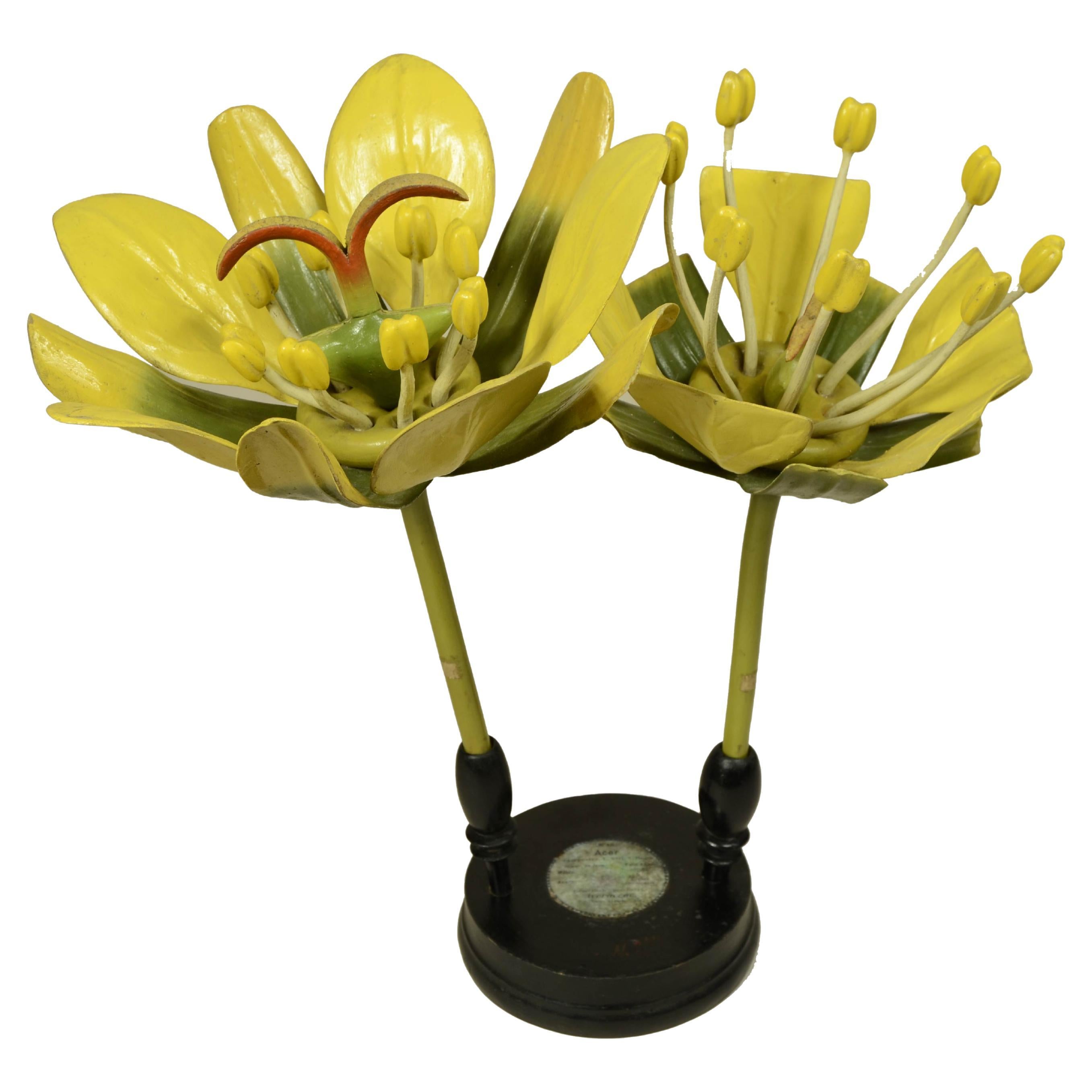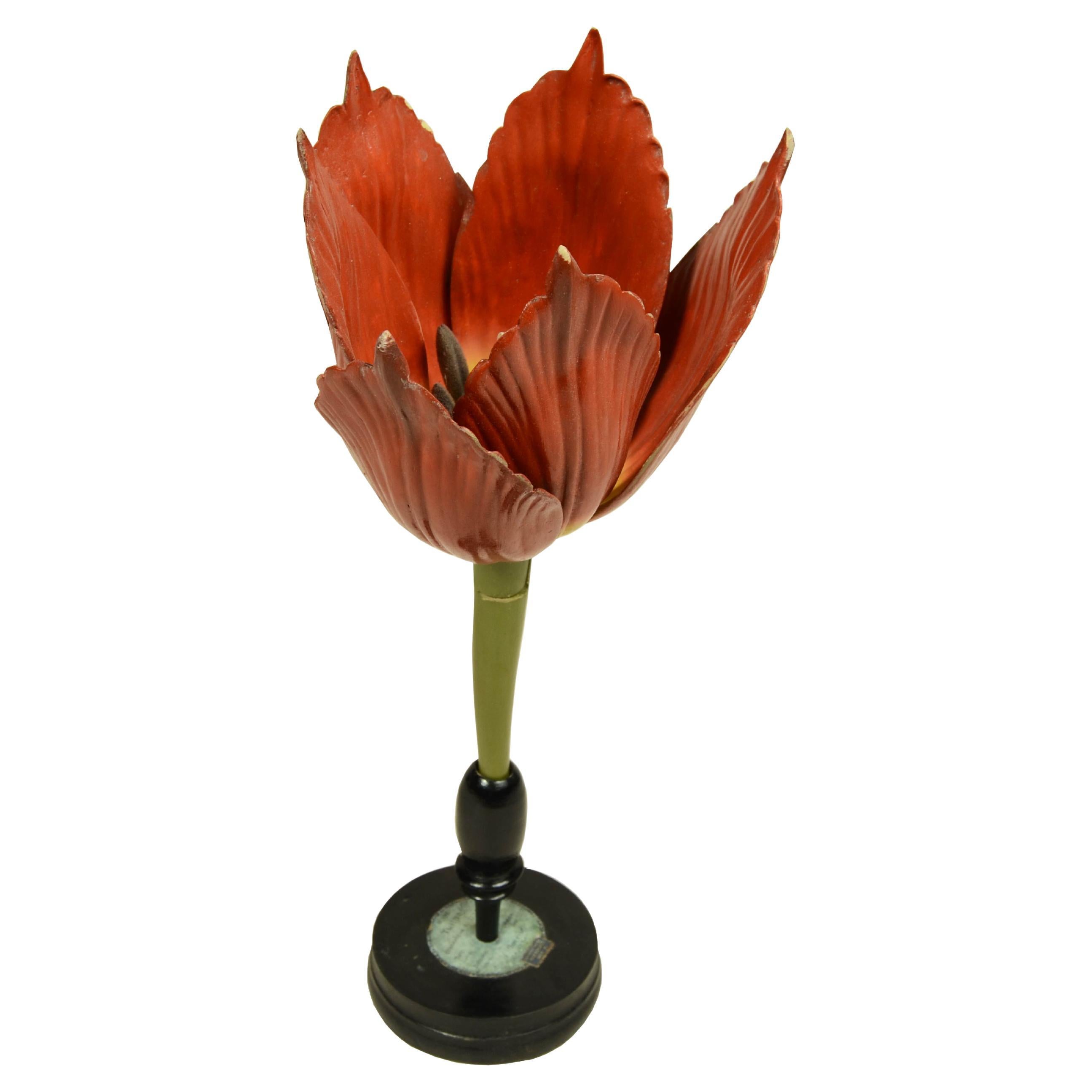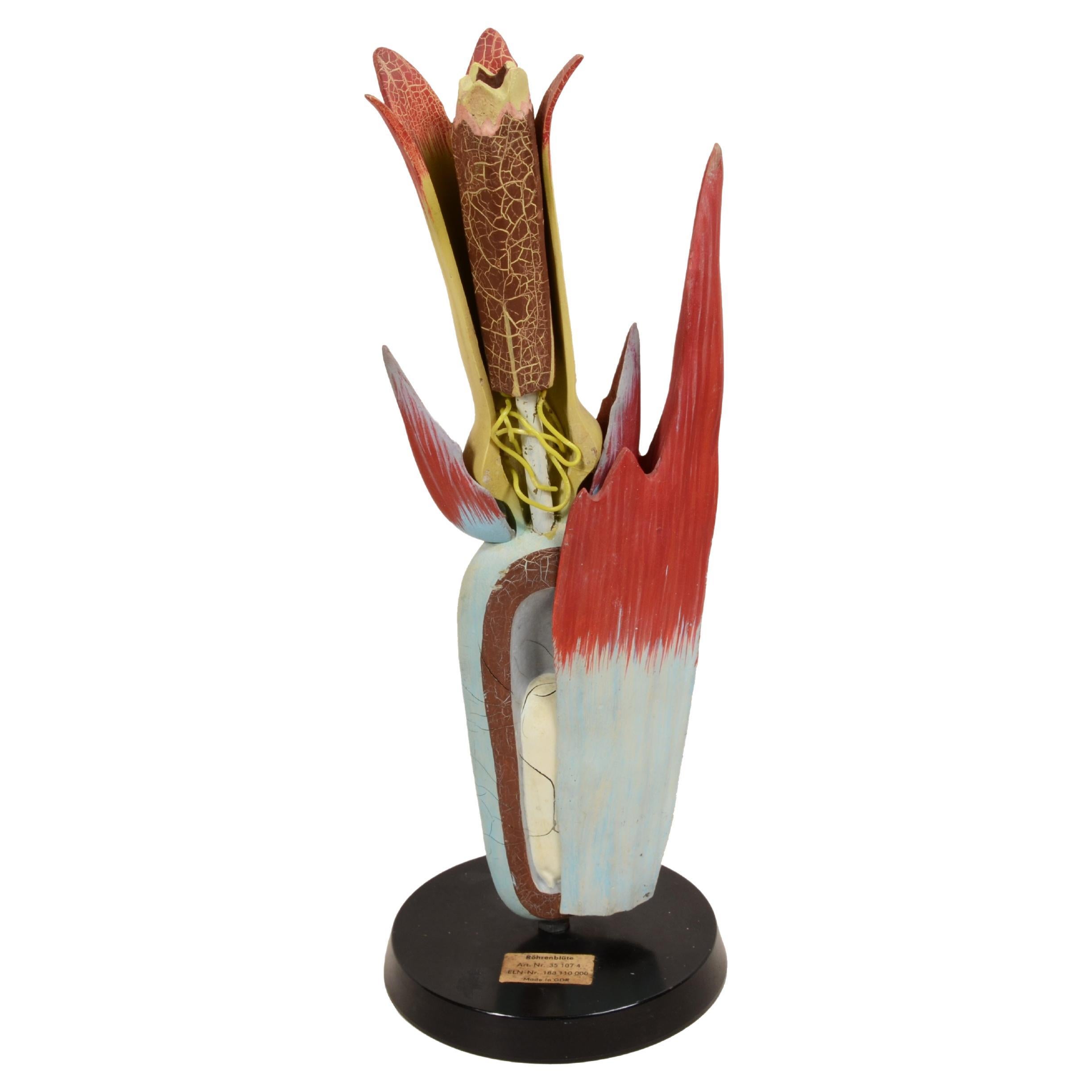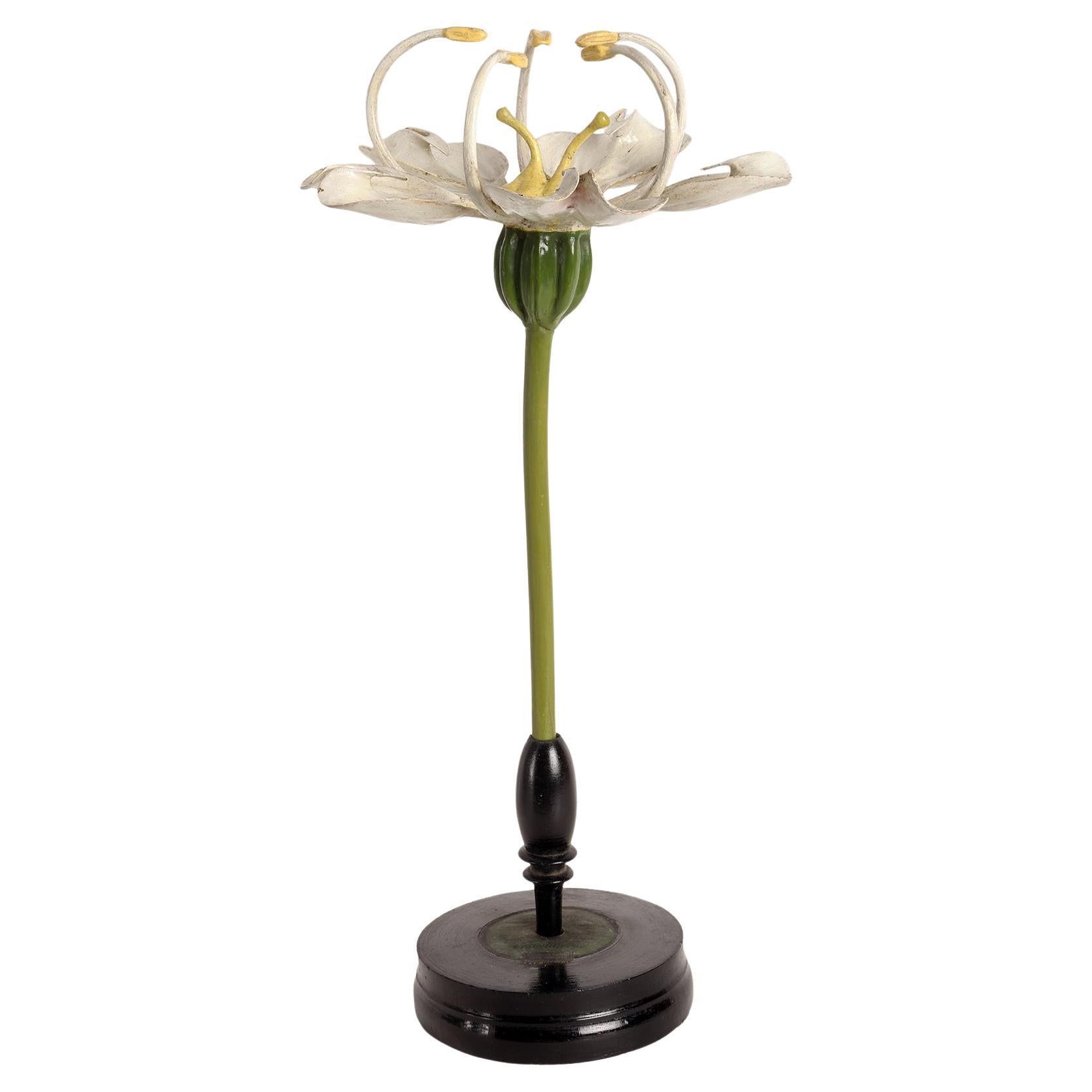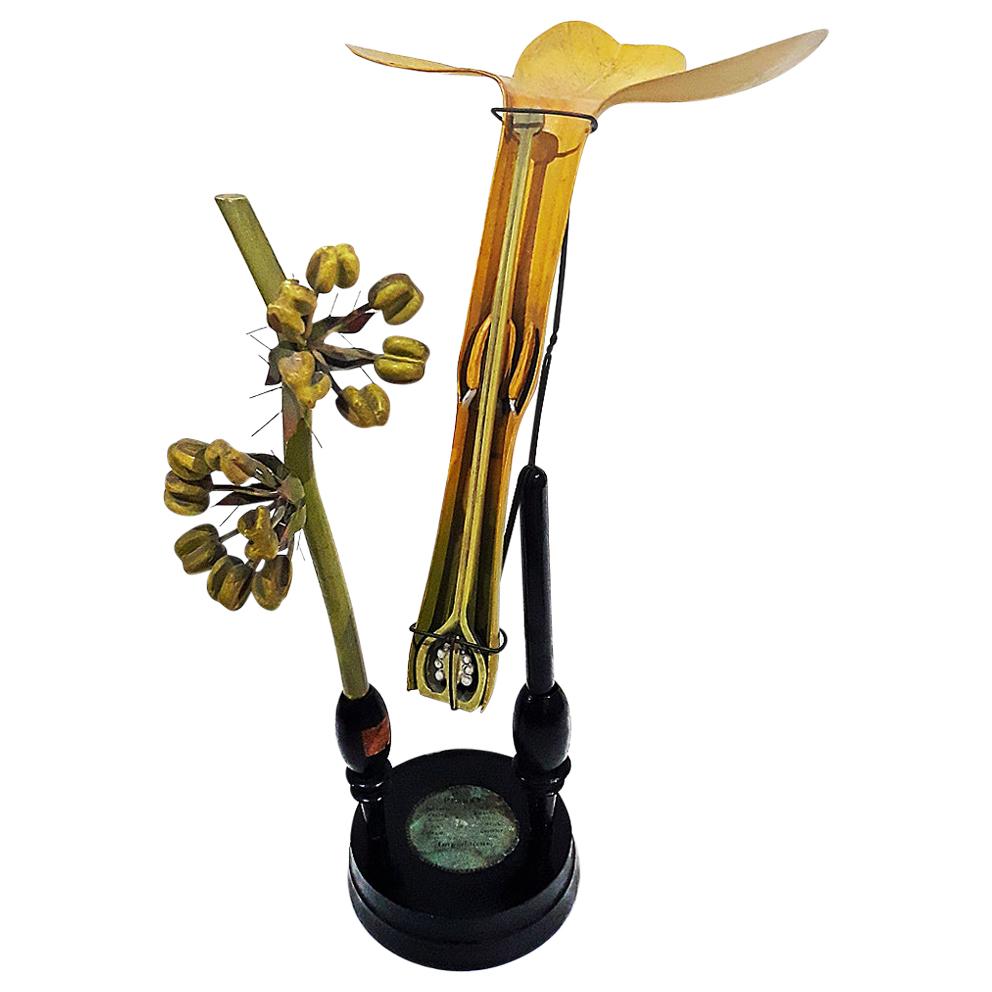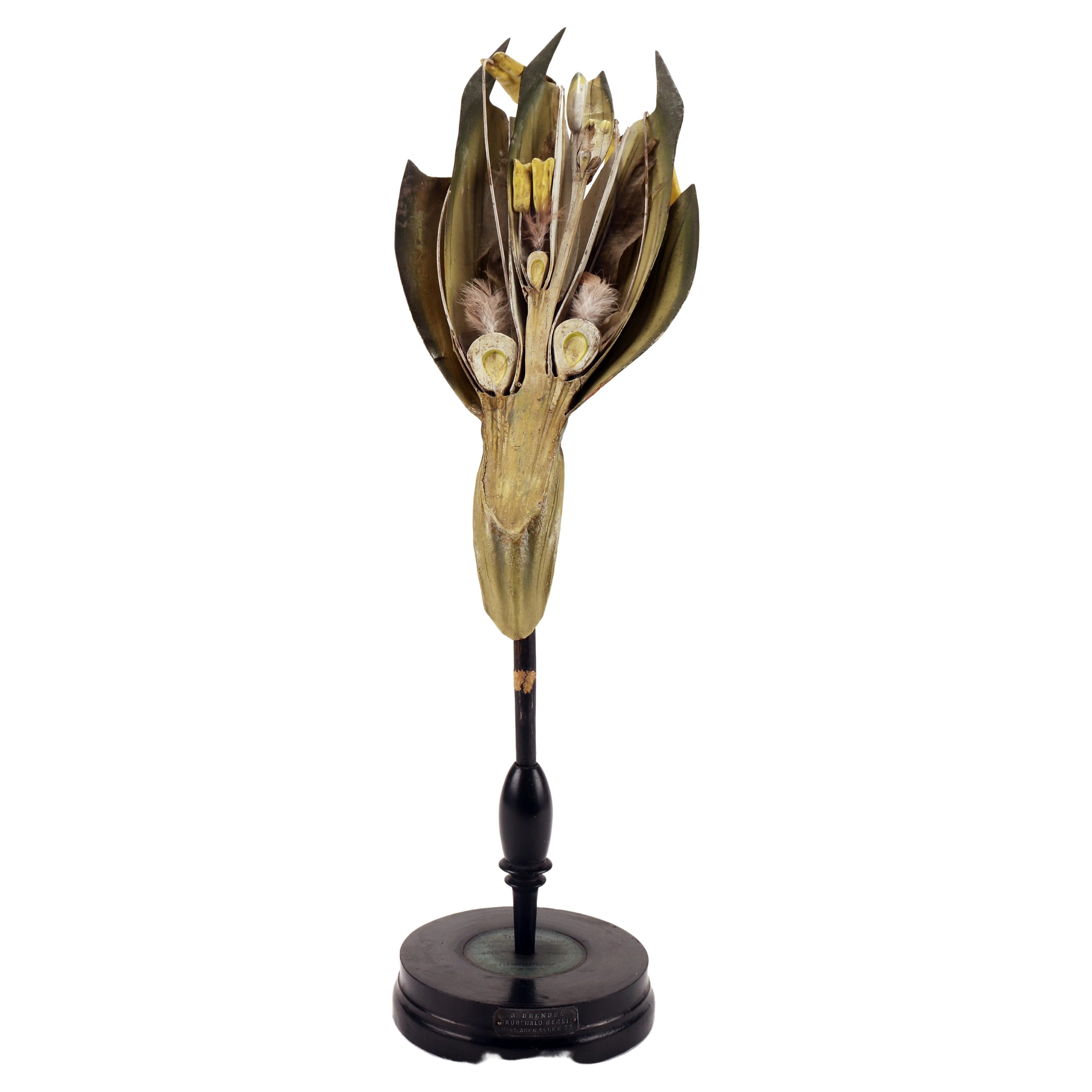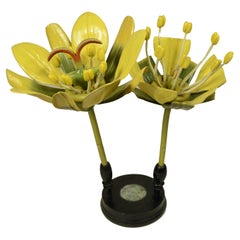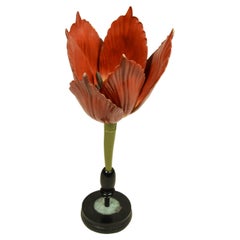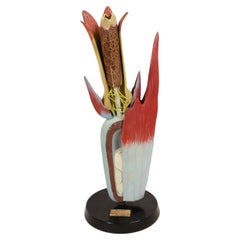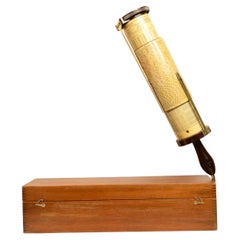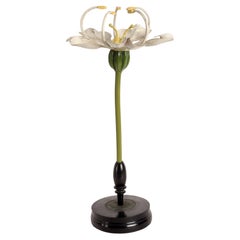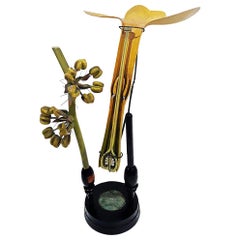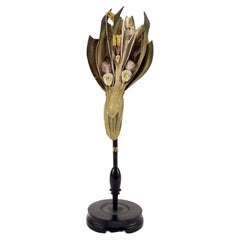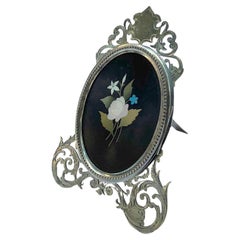Items Similar to Double botanical model of the Rosa Canina flower Robert Brendel late 19th century.
Want more images or videos?
Request additional images or videos from the seller
1 of 19
Double botanical model of the Rosa Canina flower Robert Brendel late 19th century.
$6,577.83
£4,852.62
€5,500
CA$9,105.96
A$9,873.53
CHF 5,239.77
MX$121,605.10
NOK 64,943.61
SEK 61,291.83
DKK 41,874.43
About the Item
Double botanical model of the Rosa Canina flower made around the end of the 19th century by Robert Brendel (1821-1898). The flower is made of wood and papier mache and each one breaks down into 3 sections and is mounted on a round base in ebonized wood with a label in the center describing its characteristics.
Measurements Height cm 45 - 17.7 inches, flower diameter cm 36 - 14.2 inches.
Rosa Canina is the most common species of Rose in Italy; it is often found in hedgerows and woods and belongs to the Rosaceae family and is the progenitor of all known cultivated roses .
It is a widespread species in all temperate zones of the World, adapts very well in the thicket of oak, pine and beech trees and can reach an altitude of 1,900 meters, withstands cold and tolerates heat, and does not suffer attacks from pests.
The name is said to derive from Pliny the Elder, who claimed that a Roman soldier cured rabies transmitted by a dog bite with a decoction of the roots.
The plant flowers from May to July, and the berries or false fruit also called grattaculo ripen between October and November, is a medicinal plant with high vitamin C content, which is why it is widely used by the pharmaceutical and cosmetics industries.
The Robert Brendel & Sons manufactory was founded in Breslau by Robert Brendel in 1866 with the production of botanical models of flowers, fruits and plants designed for teaching botany, creating a perfect fusion of science and art.
The need to create paper mache plant models had arisen from the difficulty of finding fresh material.
The activity began with the production of models of medicinal plants, then at the suggestion of the director of the Institute of Plant Physiology at the University of Wroclaw, the first such institute in the world, Robert Brendel extended production to include models of botany and plant anatomy more generally.
The production technique started from the development of casts on which with the prevalent use of papier-mâché, the model maker shaped the models.
The specimens produced were tempera-colored and polished with wax lacquer, each prototype was assembled to be supported by a rattan stand and then inserted into a round wooden base, which in the oldest models was painted black, while the bases inherent in the production since the early 1900s was of light wood. A label was pasted on the base with the name in Latin and the vernacular name and in various languages, as well as the serial number, scale and other details.
This teaching potential was adopted by many educational institutions, resulting in significant improvements in both the teaching and study of botany, compared with earlier methods that were based on drawings or prints, or with the practice of dissecting real plants, with the resulting difficulty regarding rapid decomposition.
Being able to have three-dimensional enlarged models, faithful reproductions of real ones helped greatly in the study of plant anatomy, over time Brendel began to develop paper mache models that could be disassembled, the use of hooks and small hinges allowed for dissection and disassembly of the pieces significantly increasing the importance of teaching.
By the end of the 19th century, the Brendel Manufacture was famous and recognized worldwide, models were displayed and awarded in various world exhibitions, both in Europe and overseas, the catalog included more than 300 different models.
It is likely that the final closure of the business originated with the passing of the racial laws during the Third Reich, as the Brendel family was of Jewish descent.
- Dimensions:Height: 17.7 in (44.96 cm)Diameter: 14.2 in (36.07 cm)
- Materials and Techniques:
- Period:
- Date of Manufacture:1890
- Condition:Wear consistent with age and use.
- Seller Location:Milan, IT
- Reference Number:1stDibs: LU1020245550062
About the Seller
5.0
Vetted Professional Seller
Every seller passes strict standards for authenticity and reliability
Established in 1999
1stDibs seller since 2014
398 sales on 1stDibs
Typical response time: 2 hours
- ShippingRetrieving quote...Shipping from: Milan, Italy
- Return Policy
Authenticity Guarantee
In the unlikely event there’s an issue with an item’s authenticity, contact us within 1 year for a full refund. DetailsMoney-Back Guarantee
If your item is not as described, is damaged in transit, or does not arrive, contact us within 7 days for a full refund. Details24-Hour Cancellation
You have a 24-hour grace period in which to reconsider your purchase, with no questions asked.Vetted Professional Sellers
Our world-class sellers must adhere to strict standards for service and quality, maintaining the integrity of our listings.Price-Match Guarantee
If you find that a seller listed the same item for a lower price elsewhere, we’ll match it.Trusted Global Delivery
Our best-in-class carrier network provides specialized shipping options worldwide, including custom delivery.More From This Seller
View AllDouble botanical model of the flower of the Field Maple Robert Brendel late 19th century
Located in Milan, IT
Double botanical model of the flower of the Field Maple made in Germany around the end of the 19th century by Robert Brendel (1821-1898). The flower is made of wood and papier mache ...
Category
Antique Late 19th Century Natural Specimens
Materials
Wood
Original botanical model of the Tulip flower Robert Brendel late 19th century
Located in Milan, IT
Original Brendel botanical model of the Tulip flower made in Germany around the end of the 19th century by Robert Brendel (1821-1898). The flower is made of wood and papier mache and...
Category
Antique Late 19th Century Natural Specimens
Materials
Wood
Educational botanical cross-sectional model of the inner part of sunflower flower
Located in Milan, IT
Educational botanical model in section of the sunflower flower showing its inner part, this is an enlarged and decomposable inner tubular corolla of a concrescent petal section in th...
Category
Vintage 1950s Taxidermy
Materials
Bakelite
Ebonite brass and paper mache slide rule designed by G. Fuller Belfast
Located in Milan, IT
Antique ebonite, brass and papier-mâché, spiral-shaped slide rule designed by George Fuller of Belfast, professor of engineering at Queen's University of London in 1878, made by STAN...
Category
Early 20th Century Scientific Instruments
Materials
Wood
Compass by hand magnetic sensing, signed Henry Browne & Son early 1900s
Located in Milan, IT
Compass by hand magnetic sensing, signed Henry Browne & Son Ltd Sestrel Made in England, No. 6162/B Barking & London early 1900s Height 25 cm - inches 9.8, compass diameter 10.5 ...
Category
Antique Early 1900s Nautical Objects
Materials
Brass
Handcrafted mechanical lunarium with cast iron base, second half of the 19th cent
Located in Milan, IT
Handcrafted mechanical lunarium with cast iron base, second half of the 19th century, surmounted by a globe made by cartographer Jan Felkl. Turning the crank placed under the circle...
Category
Antique 1870s Globes
Materials
Metal
You May Also Like
A botanic model Brendel, Germany 1900.
Located in Milan, IT
A rare botanical model of the Brendel, Conium maculatum N.60 (Umbelliferae). The round base in ebonized wood holds the botanical model which reveals the flower of the Hemlock. Brende...
Category
Early 20th Century German Scientific Instruments
Materials
Wood
Robert Brendel's Botanical Model, 19th Century
By Robert Brendel
Located in New York, NY
A Botanical model by Robert Brendel, famous German botanist, 19th century.
As detailed by the University of Aberdeen Zoology Museum, "In the late 19th century Botanist and model-mak...
Category
Antique 1890s German Other Models and Miniatures
Materials
Wood, Lacquer
Botanic Model Brendel, Germany, 1890
Located in Milan, IT
A rare botanical model of the Brendel, Triticum Vulgare N.11A (Gramineae). The round base in ebonized wood holds the botanical model which reveals the fl...
Category
Antique Late 19th Century German Figurative Sculptures
Materials
Plaster, Wood
Commesso di Fiori Fiorentino con Cornice Argentata Ovale Montelatici 1920
By Giovani Montelatici
Located in Milano, MI
Cornice da Tavolo argentata con Commesso di Fiori inizi 1900 di forma ovale con un profilo perlinato ed incernierato nella parte destra in modo tale da poter aprire la cornice che presenta due piedi ed una cimasa riccamente decorati da volute finemente incise nei bordi. La cornice di questa placca ovale è realizzata in lamina di ottone di buon spessore ed argentata con una marchio sul retro con le iniziali MV in campo ovale con figura di un martello al centro.
Il commesso è realizzato su lastra di ardesia o lavagna con l’intarsio di una rosa al centro e dei fiorellini di campo. Degne di nota le foglie verdi per le quali sono state scelte pietre dure con sfumature chiaroscurali naturali che danno una bella profondità alla composizione floreale.
All’interno dell’antina ovale troviamo una fodera verde stampata in oro con la dicitura G. Montelatici 7 Lung’Arno Corsini Firenze con giglio fiorentino al centro.
Giovanni Montelatici...
Category
Early 20th Century Italian Art Nouveau Models and Miniatures
Materials
Marble, Slate, Brass
Napoleone Martinuzzi, a 'Pianta Grassa' sculpture
Located in Zurich, CH
Napoleone Martinuzzi (1892-1977), a 'Pianta Grassa' sculpture, ca. 1925-1931
executed by Venini & C., Murano, Italy
21 cm (height)
signed with two-line acid stamp
very good conditio...
Category
Vintage 1930s Italian Natural Specimens
Materials
Murano Glass
$11,002 Sale Price
20% Off
Botanic Model Brendel, Germany, 1890
Located in Milan, IT
A rare botanical model of the Brendel, Syringa vulgaris N. 37 (Uleaceae). The round base in ebonized wood holds the botanical model which reveals the flo...
Category
Antique Late 19th Century German Figurative Sculptures
Materials
Plaster, Wood
More Ways To Browse
Antique Narra
Elephant Bird Egg
Green River Stone
Jaguar Pelt
Large Iridescent Ammonite
Martian Meteorites
Octopus Fossil
Russian Hardstone Flower Study
Sea Whip Coral
Seahorse Candleholder
Skull Pedestal
Taxidermy Anteater
Tole Orange Tree
Tortoise Carapace
Triceratops Skull
Warthog Skull
Whale Bone Sculpture
Agate Specimen Box
